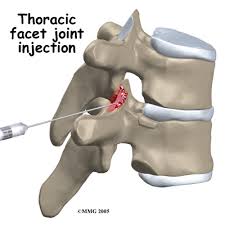Trochanteric Bursitis
Synovial bursae are sacs that generally occur near our joints and sometimes communicate with the joint cavity. They typically sit at sites of anatomical friction and are designed to reduce friction. A swollen and painful bursar is known as a bursitis or bursopathy and can result from a number of causes including:
Synovial bursae are sacs that generally occur near our joints and sometimes communicate with the joint cavity. They typically sit at sites of anatomical friction and are designed to reduce friction. A swollen and painful bursar is known as a bursitis or bursopathy and can result from a number of causes including:
- Inflammatory arthritis
- Gout
- Pseudogout
- Infection
- Acute trauma
- Mechanical irritation through friction
- Pathology in the joint or tendon in which the bursae communicates
The trochanteric bursae sits between the upper part of the thigh bone (femur) and the gluteal tendons on the outside of the upper thigh. It can be irritated by mechanical overload however in most case the irritation is usually secondary to a tendon disorder in the overlying tendon.
Pain and Symptoms
Pain is typically felt in the outside of the upper thigh. It can be painful to lie on and is usually aggravated by walking (particularly up hills and steps) and compression (e.g. lying on the painful side).
Risk Factors
Risk factors related to tendinopathy:
- Rapid increase in activity levels
- Over-training or inadequate recovery time, including excessive walking up hills or steps
- Under activity (it is important to realise that all body tissues require a certain amount of activity for optimal health, and under active tendons may undergo degenerative changes)
- Obesity
- Diabetes
- Gender – More common in middle aged Women
Risk factors related to mechanical overload of the bursae
- Direct trauma
- Tight musculature
- Repetitive movement of the leg across the midline of the body
- Leg length discrepancy
- Anatomy e.g. a wide pelvis
- Anatomical Larger Q angle, (wider hips)
- Poor hip strength/stability
Imaging
Clinical examination is usually sufficient to diagnose this condition. Other forms of diagnostic testing may be required to obtain more detailed information and to exclude other pathology.
Treatment
This condition can be difficult to treat. Early intervention offers the best hope for recovery and may include:
- Activity modification
- Strengthening – A graded strengthening program may be required to help address
- weakness and control issues throughout the hip and the lower limb.
- Injection – A corticosteroid injection into the bursa can be effective. This needs to be prescribed and administered by a Medical Doctor.
Recovery Time
This is highly variable. Most individuals will control their symptoms over a 12 – 16 week period. If the symptoms have been there for a prolonged time it may take longer.

